North East must remember its history, ex-miner MP warns
- Published
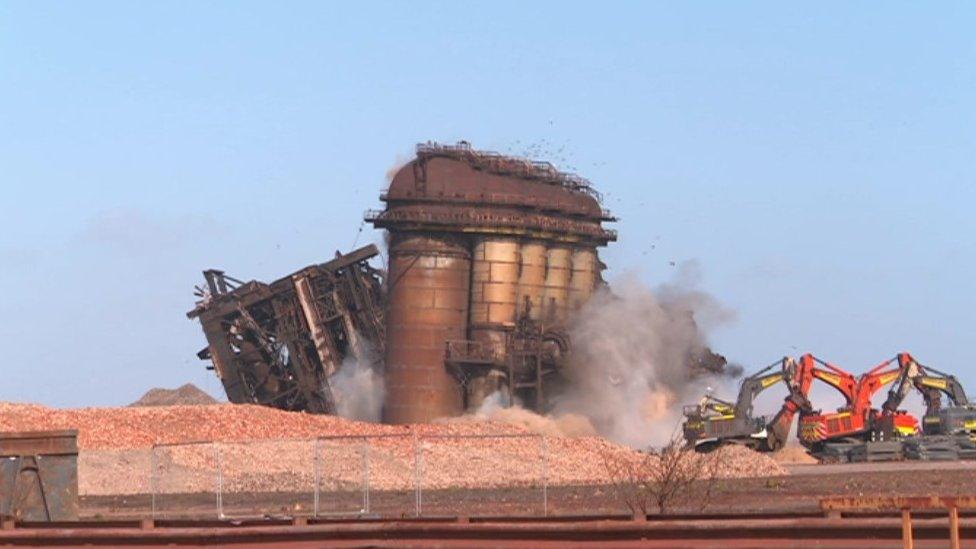
Four giant stoves on the former Redcar steelworks site were toppled earlier this week
With one controlled explosion, the final remnants of Redcar's blast furnace bit the dust.
Iron and steel, industries which once dominated Teesside, turned to scrap earlier this week.
But could the furnace have been kept as a monument to the area's history? Some campaigners called for that, but redevelopment was put first.
Documents and photographs were, though, rescued for Teesside's archives.
Dr Tosh Warwick, a member of the Teesworks Heritage Task Force who has advised local leaders on the issue, is glad those items were kept but warns retaining any building or structure would have needed careful thought.
"We don't live in an era where we can keep buildings for the sake of it. They need to have a vision and a purpose for the 21st Century.
"With the demolition of the steelworks site, a lot of these landmarks have disappeared."
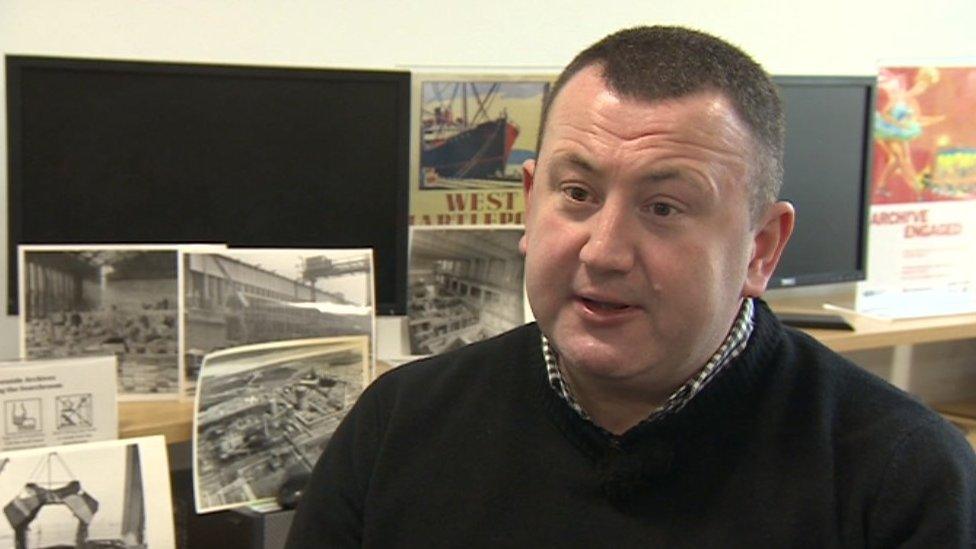
Dr Tosh Warwick argues buildings must have a purpose if they are to be saved
Archive staff on Teesside are working with Dr Warwick to record interviews with former steel workers so that even if buildings go, memories endure.
"People want to know what life was like growing up in Redcar, in South Bank in Middlesbrough [and other places]," he adds.
Ruth Hobbins, manager of Teesside Archives, said such records were important because "sometimes the voices of ordinary workers get lost".
There are, though, parts of the North East's industrial past which have survived but seem to have been forgotten.
'Sorry state of disrepair'
A 1930s pithead bath-house in Northumberland is all that is left of Lynemouth Colliery.
Built using a levy on miners' wages to replace the use of tin baths, it has been empty for decades and heavily vandalised.
Its architectural importance and social significance means it is protected with Grade II* status and that is why campaigners fought to save it from demolition in the 1980s.
But no-one, including the current owner of the site, has found a new purpose for it.
Given so few people have seen the building for decades, what is the point of holding on to it?
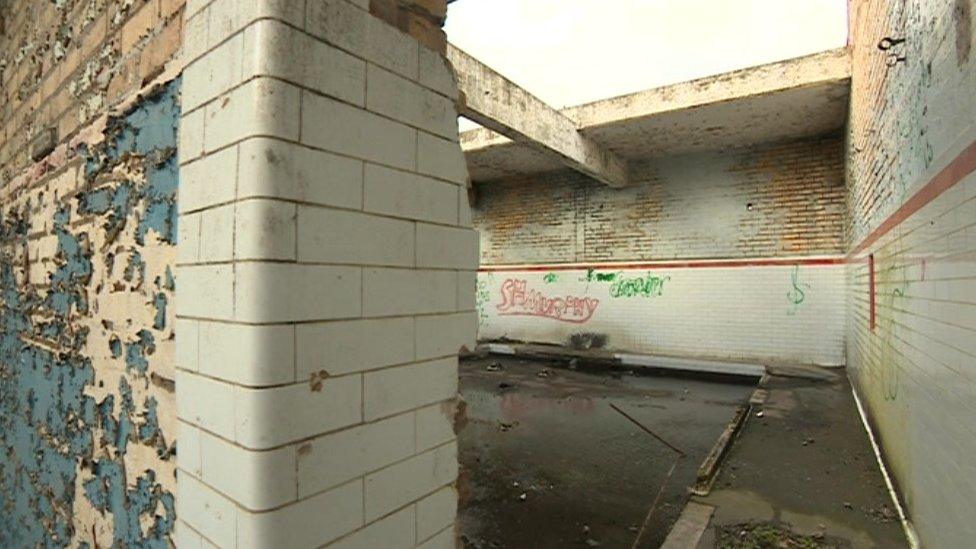
The derelict pithead bath-house at Lynemouth once formed part of the bustling colliery
Miner-turned Labour MP Ian Lavery, who represents Wansbeck, says such structures need to be saved "so future generations can understand our industrial heritage".
However, he believes clearer plans should be in place to determine who bears responsibility for them and to guarantee investment for their upkeep.
"Seeing the site at Lynemouth is heart-breaking.
"You look at places across the country and there are billions of pounds being invested in the history of grand buildings.
"The buildings we're talking about [in the North East] are in such a sorry state of disrepair. It's very sad.
"It's so important we remember our history, our traditions and our cultures and not perhaps just the top-end, the manor houses and big statues."

Follow BBC North East & Cumbria on Twitter, external, Facebook, external and Instagram, external. Send your story ideas to northeastandcumbria@bbc.co.uk, external.
- Published23 November 2022
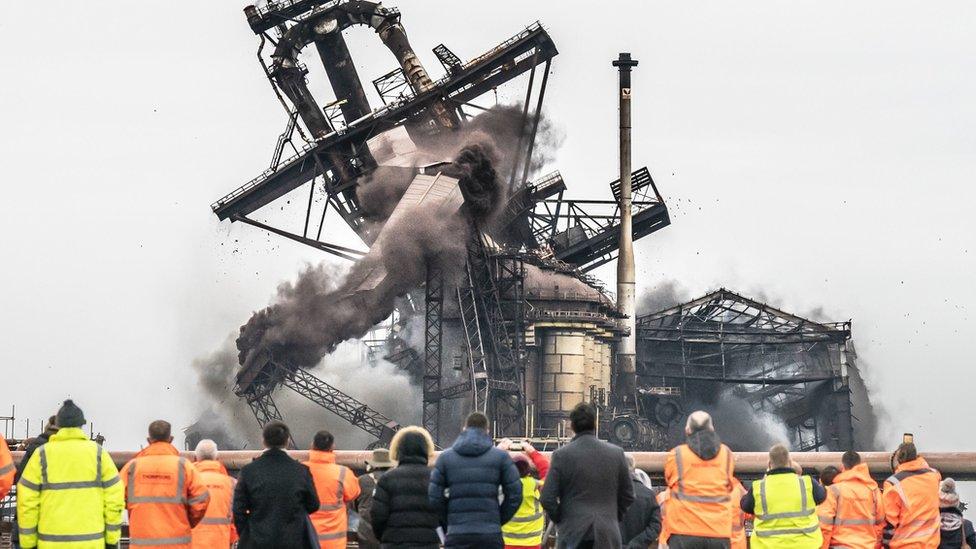
- Published1 October 2022
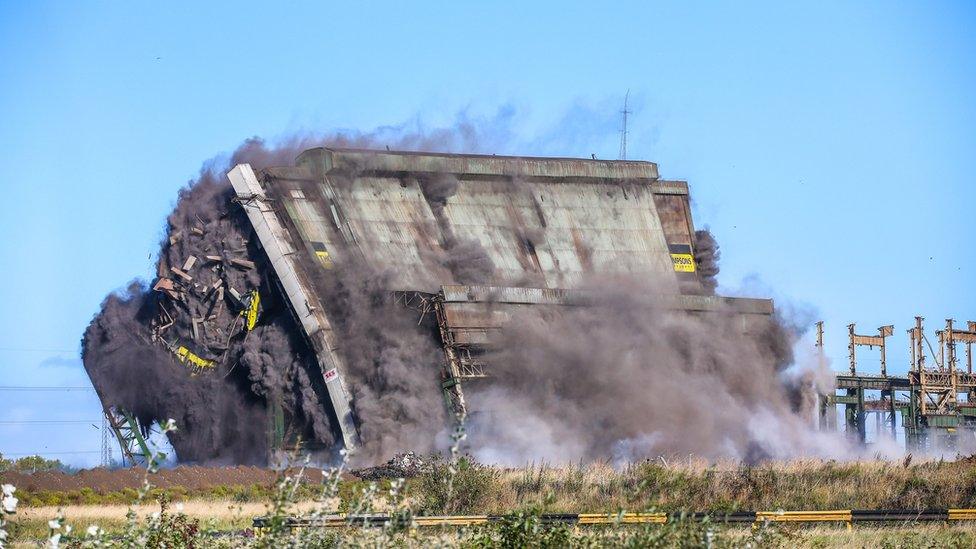
- Published20 February 2022
